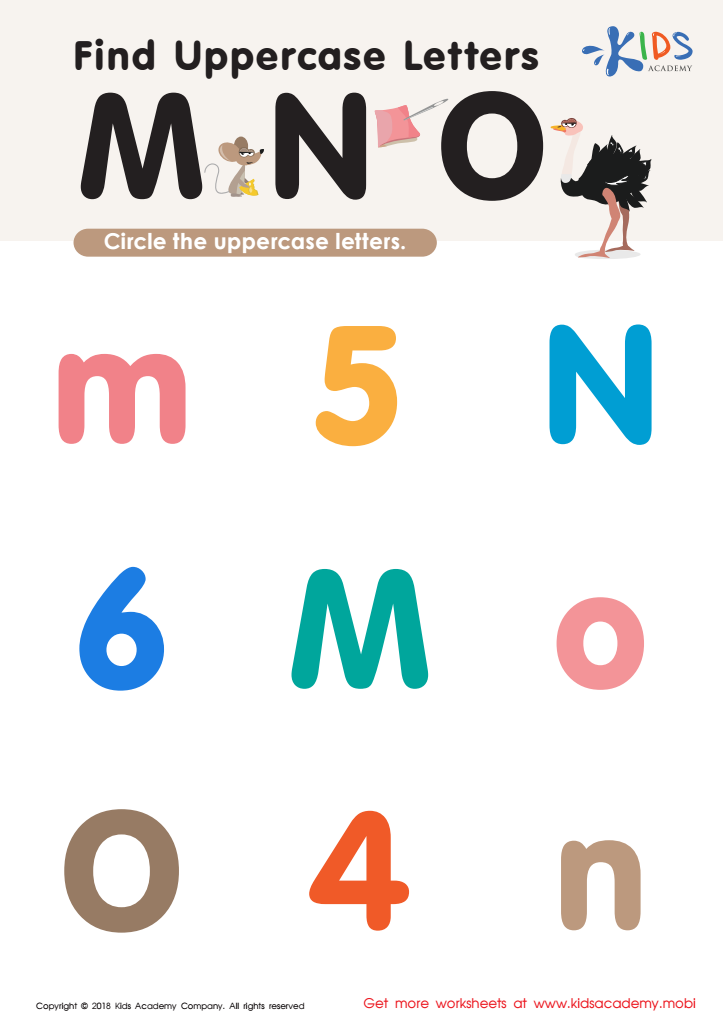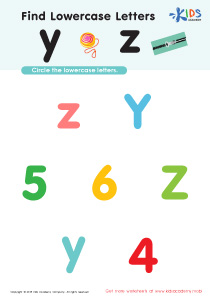Uppercase identification Normal Uppercase Letters Worksheets for Ages 4-9
5 filtered results
-
From - To
Boost your child's alphabet mastery with our Uppercase Identification Normal Uppercase Letters Worksheets designed for ages 4-9. These engaging, printable worksheets help young learners recognize and identify capital letters effortlessly. Perfect for preschool to early elementary students, each worksheet features fun, interactive activities that reinforce letter recognition through tracing, matching, and coloring. These carefully crafted exercises build foundational literacy skills, paving the way for reading and writing success. Ideal for both classroom use and at-home learning, our Uppercase Letters Worksheets are your go-to resource for nurturing confident, enthusiastic learners. Get started today and watch your child thrive!


Find Uppercase Letters Worksheet


Find Uppercase Letters J, K, and L Worksheet


Find Uppercase Letters A, B, and C Worksheet


Find Uppercase Letters V, W, X Worksheet


Find Uppercase Letters M, N, and O Worksheet
Recognizing uppercase letters is a foundational skill essential for early childhood education, typically grasped by children between ages 4-9. Parents and teachers should understand the importance of uppercase letter identification because it serves as the bedrock for literacy development. Proficiency in recognizing these letters helps children decode words, enhancing their reading fluency and comprehension. Familiarity with uppercase letters also supports writing skills, as young learners often start by practicing capital letters due to their simpler, more distinct shapes.
Early identification of uppercase letters facilitates smoother transitions into lowercase recognition and overall literacy. As children encounter texts, both in educational settings and daily life, the ability to distinguish letters quickly can significantly boost their confidence, participation, and interest in learning. Moreover, mastering uppercase letters aids in spelling and vocabulary acquisition, giving children the tools to express themselves clearly and effectively.
Furthermore, early letter identification is linked to academic success. Numerous studies indicate that children adept in recognizing letters tend to excel in other areas, like numeracy and critical thinking. Thus, fostering uppercase letter identification in ages 4 through 9 not only equips children with the essential skills for academic achievement but also nurtures a lifelong love for reading and learning.
 Assign to My Students
Assign to My Students















